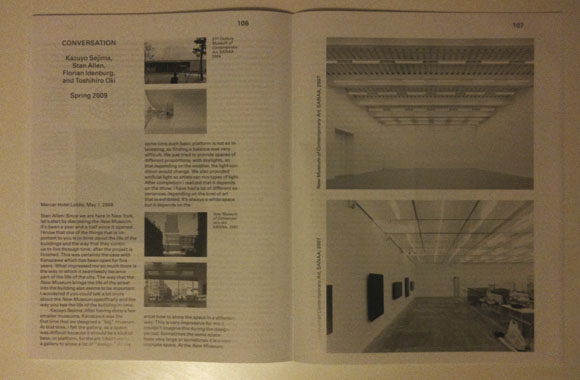
Image taken from designpublic.com / An outside view of the 21st Century Museum of Contemporary Art.

Image taken from inhabitat.com / Outside views of the New Museum of Contemporary Art in New York
Just in time Lars Mueller Publishers have now also a new publication about elements of SANAAs work. 'The SANAA Studions 2006-2008', edited by Florian Indenburg. It is a magazine style booklet about SANAAs teaching between 2006 and 2008 at Princeton University. Nevertheless this is very much a publication about SANAA as architects, since their teaching is very much about what they do on a daily basis. The student projects can hardly be distinguished from the original. Of course this is interesting to see and read about what the two actually teach the students and how they help them progress, because this is very much the pure architecture they practice.
The publication cleverly mixes the university design studio work with practice design studio work as well as built examples and references. It features project reports, essays and interviews / discussions. And all this creates a very interesting and detailed picture of what SANAAs practice is all about. It is not about the stardom, the icon or the craziest idea. It is very much abou the joy of building and creation of places, all very low-key. The format of the publication is obviously very well thought out and brilliantly supports this 'a little bit different' portrait of the now crowned architecture 'stars', portraying them as teacher and colleagues in a context. The will be a lot of great texts celebrating their work, but this one is about how they do it and how they teach other to do it.
So if you want to know the other side of the duo, this is the publication for you.

Image taken by single-blogs / Spread of the publication.
Idenburg, F., 2010. The SANAA Studios 2006-2008: Learning from Japan: Single Story Urbanism, Baden: Lars Muller Publishers.
Tidak ada komentar:
Posting Komentar